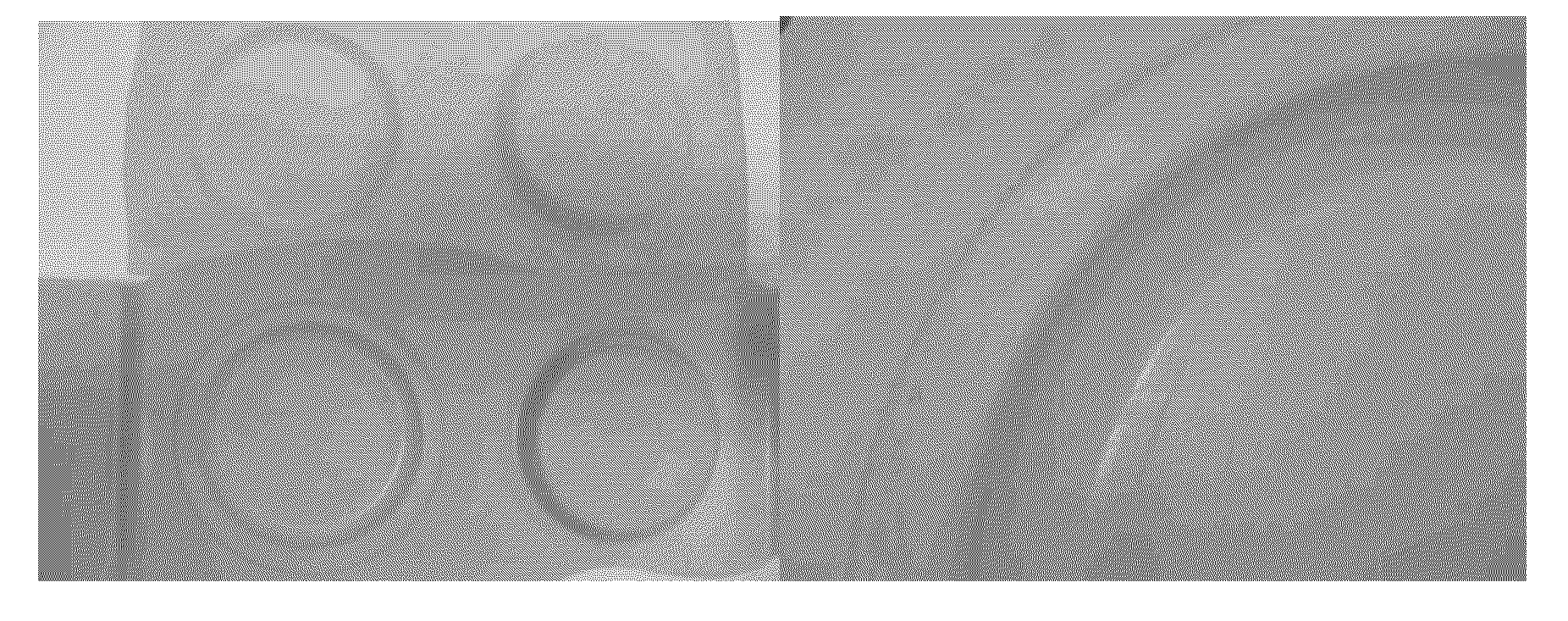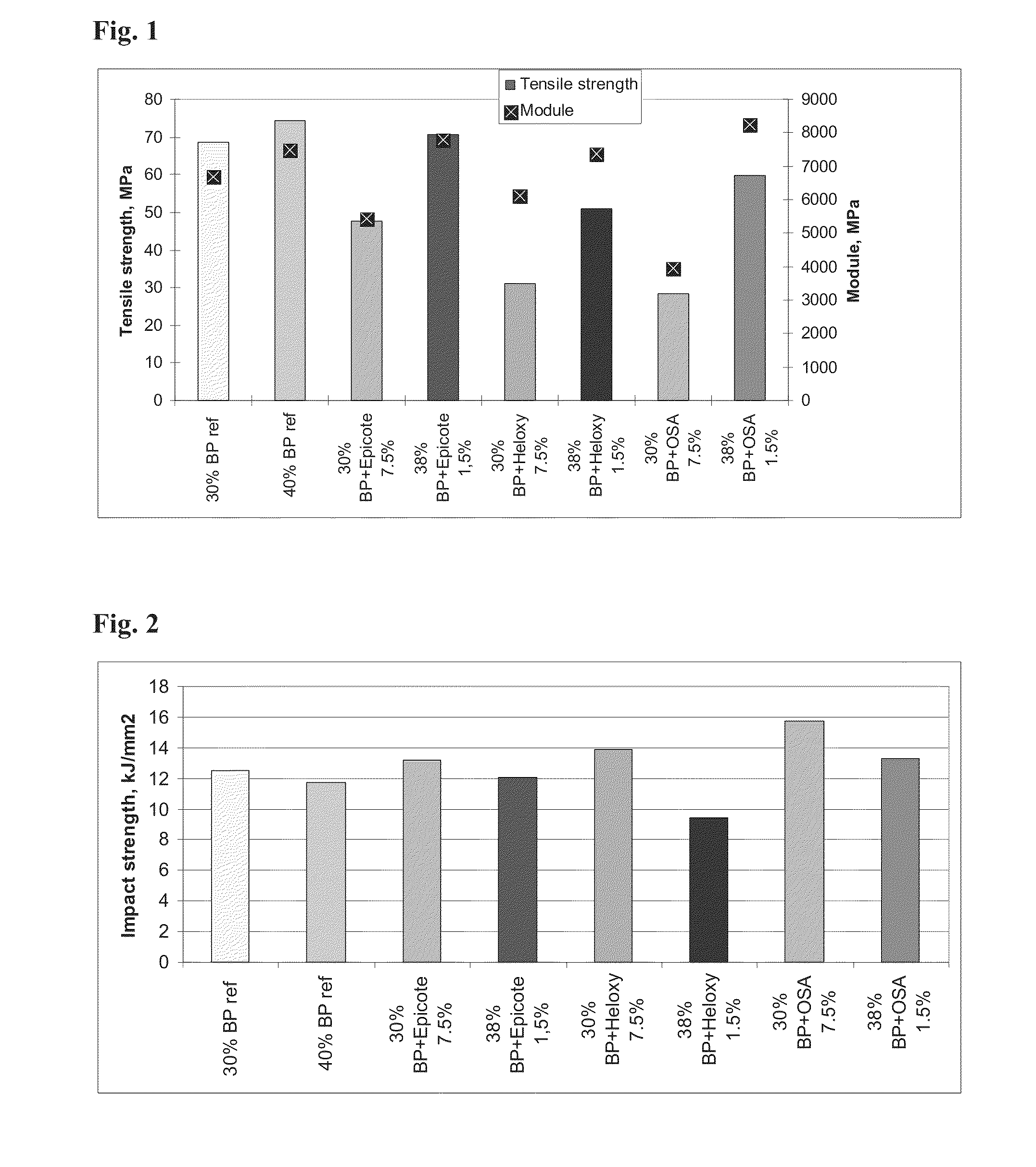Process for manufacturing a thermoformable plasticized composite containing cellulose fiber and a moldable polymer
a thermoformable plasticized composite and moldable polymer technology, which is applied in the direction of fibre chemical features, textiles and papermaking, artifical filament manufacturing, etc., can solve the problems of poor adhesion, low impact strength of these materials, and restrict film forming properties, so as to improve impact strength, reduce the effect of cellulose fiber and polylactic acid conten
- Summary
- Abstract
- Description
- Claims
- Application Information
AI Technical Summary
Benefits of technology
Problems solved by technology
Method used
Image
Examples
example 1
Materials of the Invention
[0073]The polymeric matrix material used in this example was PLA 2002D (NatureWorks), which is a polylactide tailored for film purposes. The used fiber material was birch pulp (VTT / KCL), which was torn to pieces from a sheet using a blade mill with 15 mm holes. Several reactive compatibilizers having different functionalities were tested as compatibilizers in the composites, these compatibilizers including different epoxides, anhydrides, hydroxyl functions, double bond (ketene) functions and dispersants. Some materials and their functionalities are presented in Table 1.
TABLE 1Reactive compatibilizer or cross-linkers used in PLA- birch pulp composites.CompatibilizerCodeProducerFunctionalityOtherArcol polyolOH1BayerOH-value 110PP polyether polyol1110-1linearCardura E10PE1HexionEpoxide value 4100-C13H24O3 Glysidylbranched4250 mmol / kgester ofneodecanoic acidDesmophenOH2 triBayerOH-value 33-37Trifunctional10WF15polyether polyolENR50E2Weber-Epoxy degree 50%Natura...
example 2
Analysis of the Composites
[0083]From these processed materials, tensile strength, impact strength and flexural strength properties as well as thermal behaviour (DSC) was analysed. Also film extrusion and mould processing properties were tested.
[0084]Tensile strength tests were conducted according to standard SFS-EN ISO 3167:2003 and flexural strength according to ASTM D790-02 using Instron 4505 and Charpy impact strength (unnotched) according to standard ISO179. The interactions between fibre, compatibilizer and polymer were checked using DSC (TA Instruments model MDSC2920) and dissolving PLA-matrix out. Preferably, the dissolving was carried out into dichloromethane at 39° C., whereafter the residual fibre was weighted.
[0085]The results for tensile and impact strength with some compatibilizers (in amounts of 1.5% and 7.5%) are presented in FIGS. 1 and 2.
[0086]The tensile strength and toughness was best retained with epoxy functional compatibilizers Silikopon, Cardura and Epicote an...
PUM
| Property | Measurement | Unit |
|---|---|---|
| Temperature | aaaaa | aaaaa |
| Temperature | aaaaa | aaaaa |
| Fraction | aaaaa | aaaaa |
Abstract
Description
Claims
Application Information
 Login to View More
Login to View More - R&D
- Intellectual Property
- Life Sciences
- Materials
- Tech Scout
- Unparalleled Data Quality
- Higher Quality Content
- 60% Fewer Hallucinations
Browse by: Latest US Patents, China's latest patents, Technical Efficacy Thesaurus, Application Domain, Technology Topic, Popular Technical Reports.
© 2025 PatSnap. All rights reserved.Legal|Privacy policy|Modern Slavery Act Transparency Statement|Sitemap|About US| Contact US: help@patsnap.com



